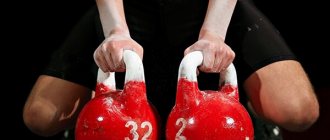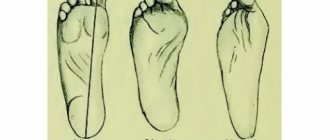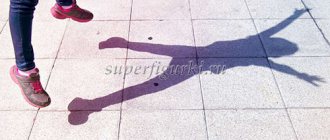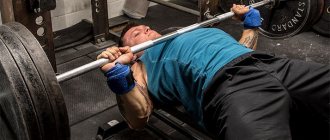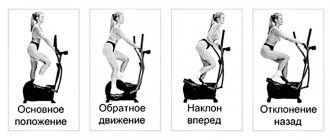Every athlete who strives to perform at a high level knows that resting between workouts can feel like a second job. Proper nutrition, the right amount of sleep, activity, the list is really long... The body is your machine and you have to give it the right fuel and the right "tech." service".
While the athlete is performing one workout, the next one is already written on the board or in a journal. And another one is being planned in my head at this time. High motivation to become better than now and than others, concentration on results and intended goals allow you to reach heights. But up to a certain point.
One day the athlete stops listening to what his body is telling him. The only thing he feels is constant fatigue, depressed mood, injuries. The question arises in my head: what is happening to me? And this is nothing more than a lack of proper physical and mental rest.
Let's start from the very beginning
Recovery is a term used to describe the process of our body adapting to the stresses caused by training or competing. For a healthy body, this term means a positive response to stress factors such as physical activity.
Rest, both mental and physical, is necessary for proper recovery of muscles and the entire body. Its quality determines how quickly we can see progress and results from daily training. Rest between workouts is an essential part of your training plan. This time is intended not only to fully recover and gain strength, but also to take a break from everyday activities. How many people actually include rest in their training plan?
https://youtu.be/5ZQyyOBG7Ns
How long should you rest between sets?
After the end of the working approach, the reserves of creatine phosphate and ATP are restored, as well as the removal of lactic acid. After about 2-3 minutes, energy reserves are restored by 80%. It all depends on the duration of the working approach itself. If it was long, around 30 seconds or even more, then recovery may take up to 7-10 minutes.
But we don’t need such long approaches, our approach lasts 15-20 seconds, which will lead to the restoration of energy reserves in about 1.5-2 minutes in large muscle groups (back, legs, chest), and after 1-1.5 minutes in small groups (shoulders, arms, calf muscle).
With this training scheme, the volume of work can be done very large, and this is exactly what is needed for muscle growth. Our main goal is to perform a large volume without depleting or acidifying the muscles with lactic acid. Muscle exhaustion occurs especially severely when the approach lasts within 30 seconds, and even more so if it lasts more than 30 seconds (10-12 or more repetitions). Even a fairly long rest (within the limits of a normal workout) will not help much in this situation, because... With each new approach, the muscles will not have time to recover and remove lactic acid, and accordingly will become acidified and depleted more and more in a non-linear progression, which ultimately will not allow performing a large amount of work with a given intensity. And what we need is high intensity (strong muscle contraction in each approach of each exercise). Therefore, such training becomes meaningless. If for a person using AAS this will lead to growth due to general anabolism, then for a natural person this approach will give minimal results in the growth of protein structures.
In this situation, you can greatly increase the rest time between sets to 20-30 minutes (train all day). By the way, this is why this technique is very effective both for naturals and, accordingly, for people on steroids. But few people have probably wondered why? The number of working approaches is approximately the same as in a regular workout. But the returns are so different. The thing is that with long breaks in each approach, the muscle contracts with maximum force, and at the same time you do not acidify them with lactic acid and do not deplete them - with long breaks, the entire energy supply is restored and all lactic acid is eliminated.
Rest between workouts as part of your training plan
It often turns out that people starting their sports journey, especially in bodybuilding and crossfit, trying to achieve the effect of exercise as soon as possible, quickly lose fat mass and build muscle. And they train without rest every day. Meanwhile, this is the first mistake they make.
Without adequate time to unwind after a workout, it's harder to build the body of your dreams or improve your performance. Constant intense exercise will only lead to the fact that our body will no longer be able to cope with the load, we will be weaker, and the threshold of both psychological and physical discomfort will be lowered.
Body and mind depend on each other. When our body is sick, our mind is not in the best shape. The same situation occurs in the opposite direction, when there is too much going on in our lives, stress leads to physical fatigue, inefficiency and weakness.
Athletes also experience all these symptoms. And, although this is often difficult to accept, it is important to fit rest between workouts into the plan. Thanks to this, we will not only achieve the intended results, but also our cardiovascular system, especially the heart, will work much better.
Below are the main, most important reasons why rest between workouts is necessary. He helps:
- avoid overtraining (muscle pain, constant fatigue, lack of energy),
- avoid injury,
- restore the motivation necessary for further learning,
- reduce emotional stress
So you must learn to rest!
Muscles...
...the human body is amazing...you need to know it and be able to listen to it, then it will serve for a long time and with high quality......
10 most interesting facts about muscles
1
In total, there are from 640 to 850 muscles in the human body (depending on the method of calculating differentiated muscle groups). During simple walking, the body uses up to 200 muscles. Muscle tissue is 15% denser and heavier than fat tissue, so a trained person can outweigh an overweight but unathletic person of the same height. Muscles account for an average of 40% of body weight.
2
The most enduring muscle in humans is the heart, the shortest is the stapedius (it strains the eardrum in the ear). Its length is 1.27 millimeters. The longest muscle in the human body is the sartorius. The fastest muscle is the blinking muscle. There are different opinions about which muscle in the body is the strongest. It is often said that the most powerful muscle is the tongue, but the tongue is made up of several muscles, so this point of view is false. The chewing muscles are very strong (their pressure can reach 100 kilograms), as well as the calves and gluteal muscles.
Stapedius muscle
3
Human muscles are not the same. Therefore, they need to be trained differently, and the recovery time for different muscle groups is different. The triceps recover the fastest, the back muscles the slowest. This must be taken into account when training; muscles need rest no less than load, since the growth of muscle fibers occurs due to the effect of supercompensation. Full muscle recovery occurs only 48 hours after intense exercise.
4
Endurance is the ability of a muscle to maintain performance over time. The most enduring muscle of the human body, as we have already said, is the heart. According to doctors, the “safety margin” of the average heart is at least 100 years. Muscles begin to get tired when they run out of glycogen, and fatigue is also explained by the large amount of calcium in the muscles. Previously, it was believed that the main culprit of fatigue was lactic acid. A study was conducted at Columbia University in which mice swam daily for three weeks and cyclists trained for three days. It turned out that after physical exercise, serious changes occurred in the chemical structure of the ryanodine receptor, which is responsible for muscle contraction - a gap appeared in the cell membrane through which calcium seeped into the muscle cells.
5
It is known that the movement of facial muscles is directly related to human emotions. At the beginning of the last century, the Russian scientist Ivan Sikorsky compiled a classification of facial expressions: the muscles around the eyes are responsible for the expression of mental phenomena, the muscles around the mouth are for the expression of acts of will, and all the muscles of the face express feelings. In 2011, scientists were able to discover that human facial expressions arise long before his birth. Even during the prenatal period, the child is already able to move his facial muscles, smile, raise his eyebrows in surprise or frown. Facial muscles make up 25% of the total number of muscles; 17 muscle groups are used when smiling, and 43 when angry or crying. One of the best ways to maintain smooth skin on the face is kissing. They work from 29 to 34 muscle groups.
6
Amazingly, muscle training affects not only the person himself, but also his genes. Modifications occur in them, which subsequently help the muscle fibers to be ready for new loads. In order to prove or disprove this, scientists from the University of Aarhus recruited a focus group of 20 volunteers and put them through a 20-minute aerobic exercise on an exercise bike. After the study, a biopsy of the subjects' quadriceps was taken to see how the genes had changed in their cells. It turned out that physical activity activates genes related to muscles. This is because cells store DNA using methyl groups. When they are removed, the gene information is converted into enzymes and proteins that are needed to burn calories, gain muscle mass, and consume oxygen. After the experiment, the number of methyl groups decreased in all study participants - that is, the muscles adapted to the increase in metabolism.
7
A simple person is not able to establish control over all the muscles of the body, so unconscious muscle contractions can serve for knowledgeable people as an indicator of hidden thoughts or planned actions. High-level psychologists and “telepaths” can use knowledge about these processes. Wolf Messing, one of the most famous telepaths, explained his phenomenal abilities not by magic, but by a thorough knowledge of the work of human muscles. He said: “This is not mind reading, but, so to speak, “muscle reading”... When a person thinks intensely about something, brain cells transmit impulses to all the muscles of the body.”
8
Only one in six people on earth have long palmaris muscles preserved on both hands. Some people only have them on one of their hands. These muscle fibers are responsible for the release of claws in animals. A person, of course, does not need such a function. The palmaris longus muscle is thus a rudiment used by surgeons, if necessary, as a material for muscle transplantation.
9
Oddly enough, one of the healthiest foods for the heart and muscles in general is dark chocolate. Research conducted at Wayne State University in Detroit revealed the effect of the substance epicatechin contained in dark chocolate on the growth of mitochondria in muscle cells. Scientists at the University of L'Aquila also conducted a study in which they gave subjects one hundred grams of chocolate for 15 days and measured their blood pressure. During the experiment, people's blood pressure normalized and their blood circulation improved. Accordingly, moderate consumption of dark chocolate can be considered as a prevention of heart disease and atherosclerosis.
10
Muscles don't last forever. After 40 years, they begin to be actively burned; a person begins to lose from 2 to 3 percent of muscle tissue per year, after 60 years - up to 5%. Therefore, training in adulthood is no less important than in youth.
Take care of your body and be healthy!!!
How to rest between workouts?
The day off should first of all be less active and less intense. You can do it in two ways.
Rest and complete laziness - we lie on the sofa and spend the whole day on it, visit friends, go to the movies.
Active rest between workouts is moderate physical activity, such as a bike ride with a friend or going to the pool.
Your rest between workouts should be pleasant and carefree. This is the only way you will rest both physically and mentally.
Expert opinion on how long it takes for muscles to rehabilitate
Any physical activity exposes the body to stress. Therefore, you can’t just finish doing the complex, pack up and go home. After training, the athlete must prepare the muscles for rest and gradually reduce the load. To do this, you need to complete the workout correctly:
- Stretching exercises. This cool-down accelerates muscle growth, helps avoid injuries, and finish exercises correctly. Perform stretching exercises for 3-5 minutes, and then go to rest.
- Cardio exercise at a moderate pace. After performing strength exercises, the athlete can do 5-10 minutes of cardio. To do this, you can use a treadmill, elliptical, exercise bike, jump rope, etc. Reduce the pace gradually, moving to a step at the end.
Effective rest between workouts
To ensure effective rest between workouts, it is important to remember:
Healthy eating. Working out is hard work that significantly reduces your energy, water, vitamins and minerals. A balanced diet allows you to cover the current needs of the body.
Quality of sleep. Good sleep is essential for maintaining health, but it is even more important for achieving high athletic performance. During sleep, the entire muscular and nervous system is restored. Emotional stress is also reduced.
Psychological mood. On a rest day, you should do completely different things than your favorite workout - read books, listen to music, walk. It is very important that our mind takes a break from training and even from thinking about it for at least some time.
Warming up and warming up before training. A body that is prepared for training suffers less damage, resulting in faster recovery after training.
Useful video
If you started reading right from the end, here is a summary of the article. How many rest days between workouts do you need? This depends on various factors:
- How intensely do you train?
- How competently do you carry out your recovery? In order for muscles to grow, it is necessary to give 2-3 days of rest between training the main muscle groups. However, this does not mean that more time may not be needed. For example, with a 5-day workout, you could give each muscle group 6 full days of rest and still make great progress.
- What we haven't discussed are supplements that can speed up recovery:
- creatine
- Whey Protein
- omega-3 fatty acids.
Finding the ideal number of rest days between workouts will require some experimentation. If anything, this article should point you in the right direction.
source
source
Now you know how long it takes for muscles to recover after training, so as not to disrupt this process, follow these recommendations:
- Take about 2 days off between training sessions.
- Finish your session with stretching.
- Ensure yourself peace, avoid stress, get at least 8 hours of sleep.
- On non-training days, eat more protein and carbohydrates.
- Take sports supplements that will speed up the healing of damaged tissue and muscle growth.
- Drink at least 2 liters of mineral water per day.
- Visit a massage therapist or perform the procedure yourself.
- Take a contrast shower or visit the sauna.
By following these rules, the athlete will be able to speed up muscle recovery and achieve good training results.
source
source
source
You need painkillers
If you feel like you need a painkiller to get through the day, then it's time to stop. Dulling and masking pain can play a cruel joke on you. While taking the drug, you will not be able to understand whether your muscles have recovered or not, and whether it is worth returning to training. That is why it is advisable to abandon such a point. It is much better to just wait patiently until the soreness goes away naturally.
The pain does not subside when moving
You've probably noticed that sometimes muscle pain gradually subsides with simple movements. After waking up, the muscles seem frozen and hard. However, after walking, the pain gradually goes away, and over time the movements become easy and familiar. But if the movements do not have such a positive effect, then this is a clear sign that you have overdone the training.
Funny dogs made of yarn and paper cups: description with photos
A man drilled into a wall and found an old tunnel that no one had set foot in for 50 years.
The brave Natasha from “Strong Armor” is unrecognizable as Zhenya from “Daddy’s Daughters” (photo)




